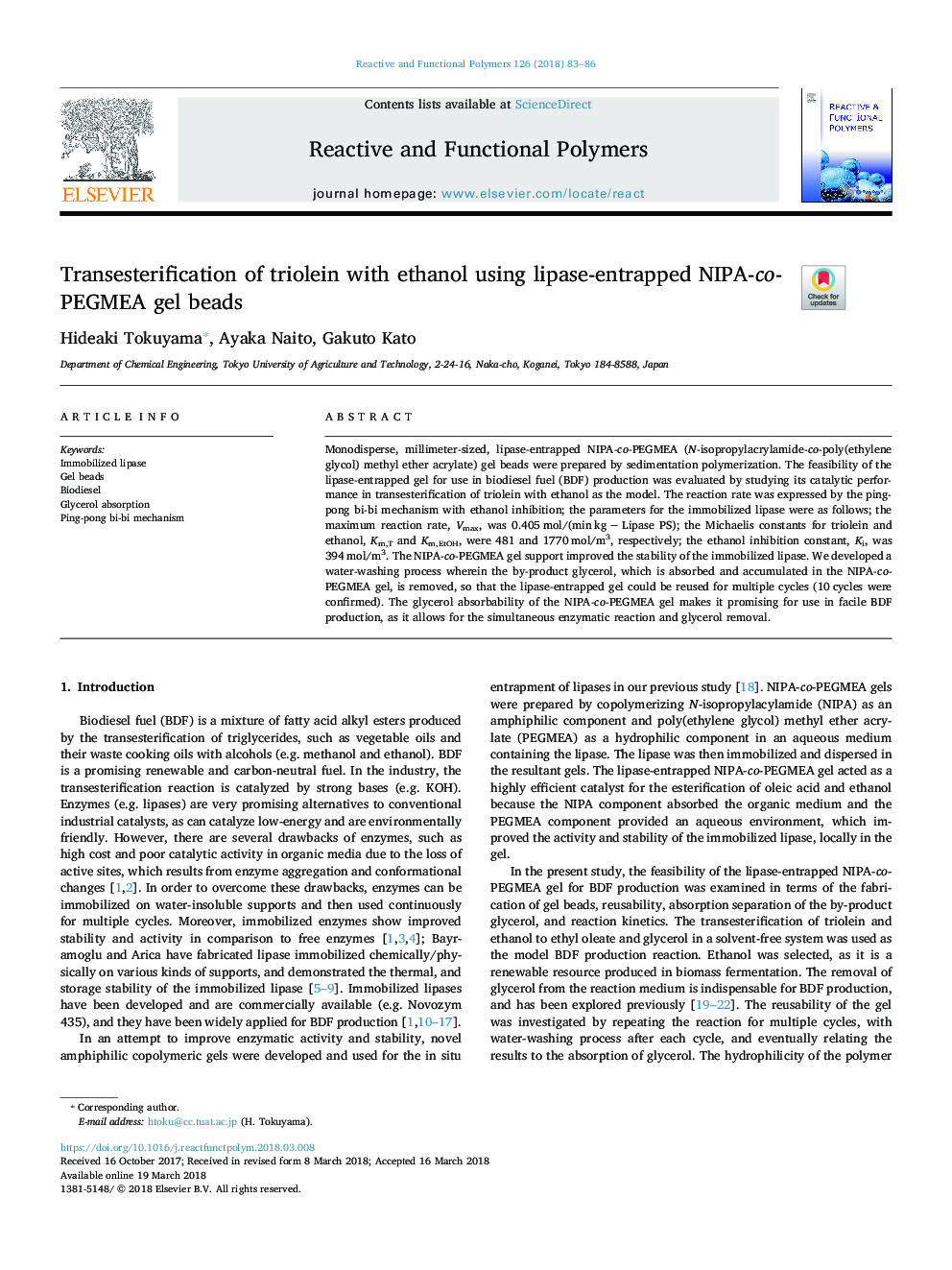| Article ID | Journal | Published Year | Pages | File Type |
|---|---|---|---|---|
| 7826303 | Reactive and Functional Polymers | 2018 | 4 Pages |
Abstract
Monodisperse, millimeter-sized, lipase-entrapped NIPA-co-PEGMEA (N-isopropylacrylamide-co-poly(ethylene glycol) methyl ether acrylate) gel beads were prepared by sedimentation polymerization. The feasibility of the lipase-entrapped gel for use in biodiesel fuel (BDF) production was evaluated by studying its catalytic performance in transesterification of triolein with ethanol as the model. The reaction rate was expressed by the ping-pong bi-bi mechanism with ethanol inhibition; the parameters for the immobilized lipase were as follows; the maximum reaction rate, Vmax, was 0.405â¯mol/(minâ¯kgâ¯ââ¯Lipase PS); the Michaelis constants for triolein and ethanol, Km,T and Km,EtOH, were 481 and 1770â¯mol/m3, respectively; the ethanol inhibition constant, Ki, was 394â¯mol/m3. The NIPA-co-PEGMEA gel support improved the stability of the immobilized lipase. We developed a water-washing process wherein the by-product glycerol, which is absorbed and accumulated in the NIPA-co-PEGMEA gel, is removed, so that the lipase-entrapped gel could be reused for multiple cycles (10â¯cycles were confirmed). The glycerol absorbability of the NIPA-co-PEGMEA gel makes it promising for use in facile BDF production, as it allows for the simultaneous enzymatic reaction and glycerol removal.
Related Topics
Physical Sciences and Engineering
Chemistry
Organic Chemistry
Authors
Hideaki Tokuyama, Ayaka Naito, Gakuto Kato,
